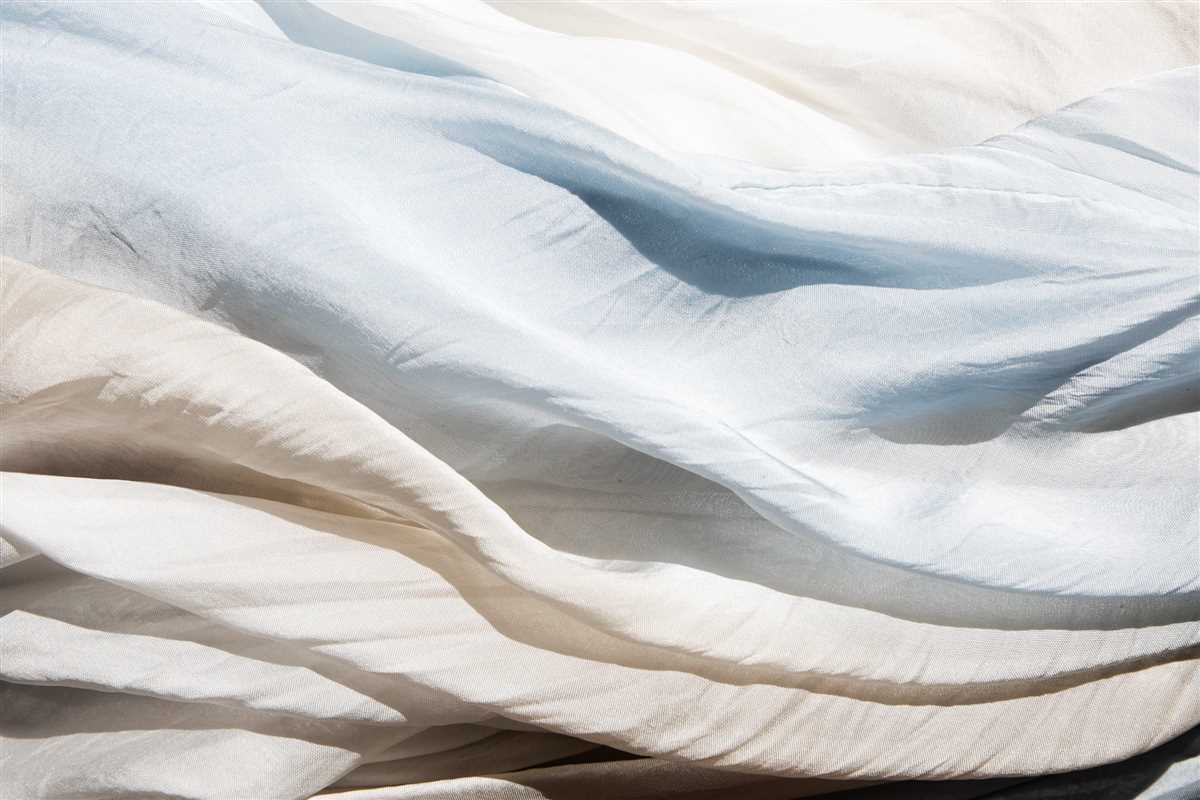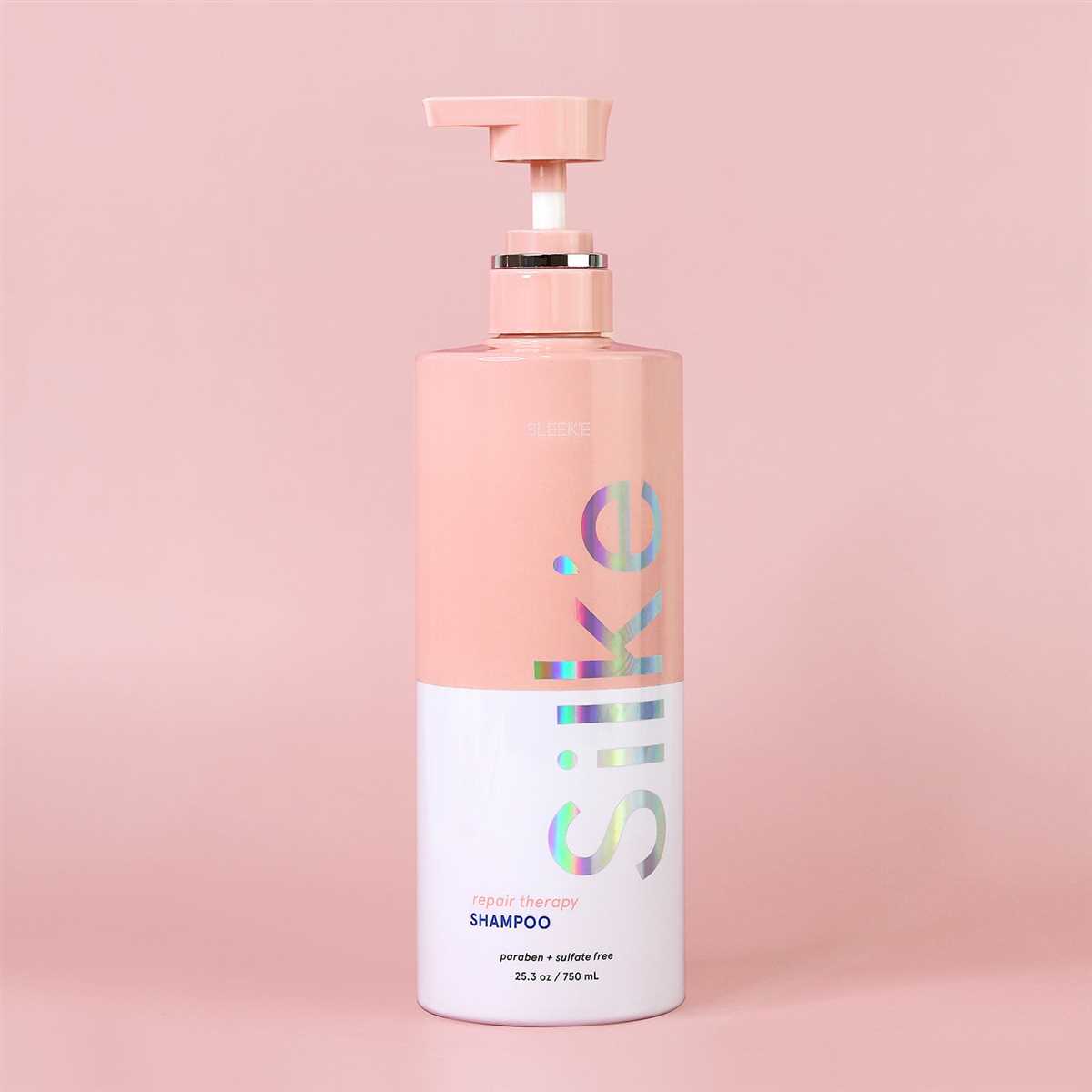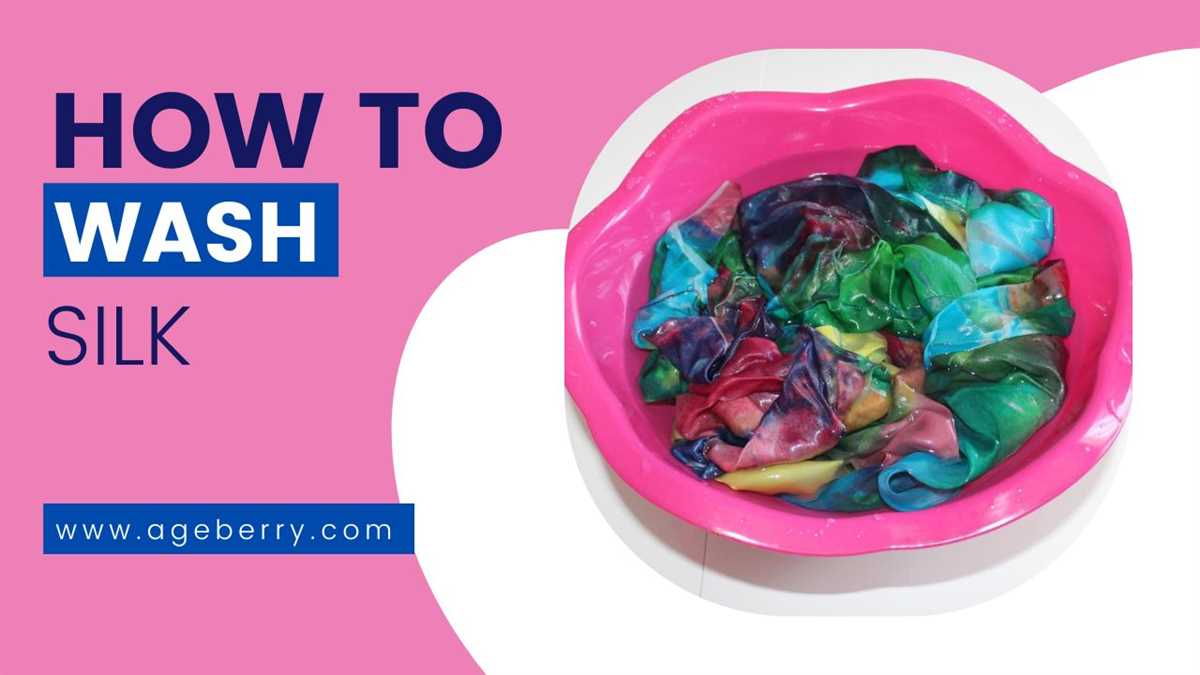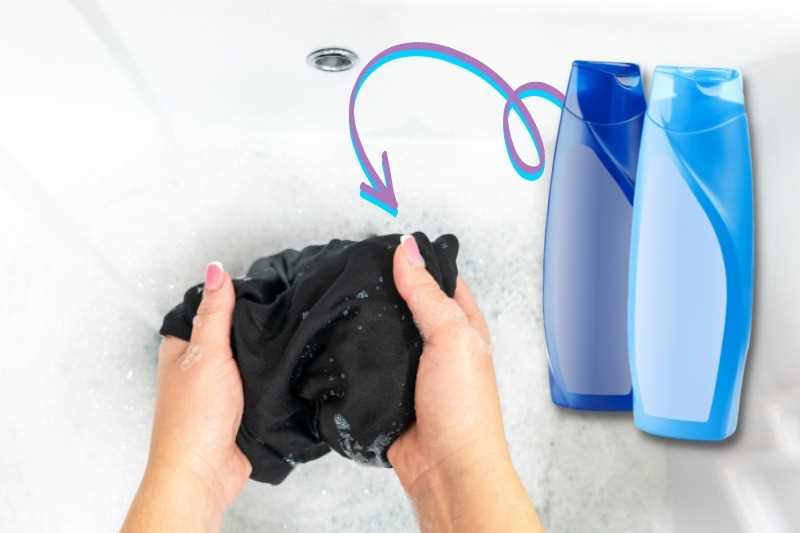


Silk is a delicate and luxurious fabric that requires special care when it comes to cleaning. Many people wonder if it is safe to wash silk with shampoo, as it is a common household cleaning product. In this article, we will explore whether or not using shampoo on silk is a good idea, and discover the best techniques for cleaning silk.
While shampoo may seem like a gentle option for cleaning silk, it is not recommended. Shampoo contains chemicals that can be harsh on delicate fabrics such as silk. These chemicals can strip the natural oils from the silk fibers, leading to damage and loss of shine. Additionally, shampoo may leave residue on the silk, which can dull its appearance and make it feel stiff.
Instead of using shampoo, it is best to opt for a silk-specific detergent or a mild detergent that is suitable for delicate fabrics. These products are formulated to gently cleanse silk without causing any harm. It is important to follow the instructions on the detergent packaging and test a small, inconspicuous area of the silk before washing the entire garment or fabric.
When it comes to washing silk, it is recommended to hand wash it in cold water. Avoid using hot water or agitating the fabric too vigorously, as this can cause the silk to shrink or become misshapen. Gently swish the silk in the water and then rinse it thoroughly to remove any soap residue. After washing, avoid wringing or twisting the silk, as this can damage the fibers. Instead, carefully squeeze out excess water and lay the silk flat on a clean towel to air dry.
Washing Silk with Shampoo: Is It Possible?
When it comes to washing silk, many people wonder if using shampoo as a cleaning agent is a good idea. Shampoo is designed to cleanse and condition hair, so it might seem like a suitable option for cleaning silk as well. However, it is important to consider the unique properties of silk and how they might be affected by using shampoo.
The Risks of Washing Silk with Shampoo
- Harsh Chemicals: Shampoo often contains harsh chemicals such as sulfates that can strip away the natural oils and proteins present in silk. This can lead to the fabric losing its luster and become dull.
- Residue: Shampoo can leave behind residue on the silk, especially if it is not rinsed thoroughly. This residue can make the silk feel stiff and affect its texture.
- Color Fading: Some shampoos contain ingredients that can cause color fading or discoloration in silk. This can be particularly problematic if you are washing colored or patterned silk garments.
The Best Silk Cleaning Techniques
If you want to wash silk effectively without risking damage, it is recommended to use alternative methods that are specifically designed for silk care. Here are a few tried-and-tested techniques:
- Handwashing: Fill a basin with lukewarm water and add a mild detergent specifically formulated for delicate fabrics. Gently agitate the water and immerse the silk item, making sure it is fully submerged. Rinse thoroughly with cool water and never wring or twist the silk. Instead, roll it in a clean towel to remove excess moisture.
- Dry Cleaning: If you are unsure about handwashing silk, or if the garment has a complex design or delicate embellishments, it is best to opt for professional dry cleaning. Silk is a delicate fabric that can easily be damaged, so professional cleaning services can ensure the garment is handled with care.
Conclusion
Although using shampoo might seem like a convenient option for washing silk, it is not recommended due to its potential risks. Harsh chemicals, residue, and color fading can all harm the delicate fabric. Instead, opt for alternative silk cleaning techniques such as handwashing with a mild detergent or professional dry cleaning to ensure that your silk garments maintain their beauty and longevity.
Understanding the Silk Cleaning Process
Silk is a delicate and luxurious fabric that requires special care when it comes to cleaning. Understanding the proper silk cleaning process is essential to maintain the integrity and longevity of your silk garments and accessories.
1. Read the Care Instructions
Before attempting to clean your silk items, it’s crucial to read and follow the care instructions provided by the manufacturer. These instructions will provide specific guidance on how to clean your silk items without causing any damage.
2. Test for Colorfastness
To ensure that your silk item won’t bleed or fade during the cleaning process, it’s important to test for colorfastness. Take a small, inconspicuous area of the fabric and apply a small amount of water or detergent. Blot the area with a clean white cloth and check for any color transfer. If there is no color transfer, you can proceed with cleaning the entire item.
3. Handwash or Dry Clean
Most silk items require either handwashing or dry cleaning. Handwashing is the safest method for delicate silk items, while dry cleaning is recommended for heavily soiled or structured silk pieces. Follow the care instructions to determine the appropriate method for your specific item.
4. Use a Mild Detergent

When handwashing silk, use a mild detergent specifically formulated for delicate fabrics. Avoid harsh detergents, bleach, or fabric softeners, as they can damage the silk fibers. Gently agitate the garment in lukewarm water, then rinse thoroughly with clean water.
5. Air Dry
After washing, never wring or twist silk to remove excess water, as this can cause creasing and stretching. Instead, gently squeeze out the water or roll the item in a clean towel to absorb moisture. Lay the silk flat on a clean, dry towel and allow it to air dry away from direct sunlight or heat sources.
6. Iron with Low Heat
If necessary, iron your silk item using a low heat setting or the silk setting on your iron. Place a clean, white cloth between the iron and the silk to prevent direct heat contact. Iron on the reverse side of the fabric to avoid any potential damage to the surface.
7. Store Properly
To keep your silk items in the best condition, it’s important to store them properly. Avoid hanging silk garments as this can cause stretching or distortion. Instead, fold the items and store them in a cool, dry place away from direct sunlight.
By understanding and following the proper silk cleaning process, you can ensure that your silk items remain clean, vibrant, and beautiful for years to come.
Benefits of Using Shampoo for Silk Cleaning
Gentle Cleaning
Shampoo is known for its gentle cleansing properties, making it a suitable choice for cleaning delicate silk fabrics. Silk is a delicate material that requires special care, and regular laundry detergents can be too harsh and damage the fabric. Shampoo, on the other hand, is designed to be gentle on hair, and it is formulated to clean without stripping away natural oils. This makes it an ideal choice for cleaning silk without causing any damage.
Conditioning Effect

Using shampoo to clean silk not only removes dirt and stains but also adds a conditioning effect to the fabric. Silk is a natural protein fiber, and just like hair, it can benefit from the moisturizing and conditioning properties of shampoo. The mild ingredients in shampoo can help to keep the silk soft, smooth, and hydrated, enhancing its overall appearance and feel.
Pleasant Fragrance
One of the added benefits of using shampoo for silk cleaning is the pleasant fragrance it leaves behind. Shampoos often come in a variety of scents, ranging from floral to fruity, and using a scented shampoo can leave your silk items smelling fresh and clean. This is particularly beneficial if you are washing silk items such as clothes or bedsheets, as the fragrance can help to eliminate any unpleasant odors and leave your silk smelling delightful.
Cost-Effective Option
Using shampoo for silk cleaning can be a cost-effective option compared to purchasing expensive silk-specific cleaning products. Most people already have shampoo in their homes for washing their hair, so using it for cleaning silk saves money on buying additional cleaning products. Additionally, since only a small amount of shampoo is needed for each wash, a single bottle of shampoo can last for multiple silk cleaning sessions, making it a budget-friendly choice.
Readily Available

Another advantage of using shampoo for silk cleaning is that it is readily available. Shampoo is a widely-used and easily accessible product that can be found in most households. This means that you don’t need to go out of your way to search for specialty silk cleaners, as you can simply use the shampoo you already have on hand. This convenience makes shampoo a convenient option for keeping your silk items clean and well-maintained.
Alternatives to Shampoo for Washing Silk
While shampoo is commonly used for washing silk, there are alternative methods that can be just as effective and gentle on the delicate fabric. These alternatives include:
- Mild Detergent: Opt for a mild detergent specifically designed for delicate fabrics. Make sure it does not contain bleach or enzymes, as these can damage the silk fibers.
- White Vinegar: Mix one part white vinegar with ten parts water and soak the silk garment in this solution for about 15 minutes. Then, gently rinse it with clean water.
- Gentle Baby Shampoo: Just like regular shampoo, baby shampoo is designed to be mild and gentle. Dilute it with water and use it to hand wash your silk items.
- Soap Nuts: Soap nuts are natural and chemical-free alternatives for washing silk. Simply place a few soap nuts in a cotton bag, soak it in water, and agitate it to create a soapy liquid. Use this liquid to hand wash your silk garments.
- Hair Conditioner: Dilute a small amount of hair conditioner with water and use it to hand wash your silk items. This can help soften the fabric and maintain its natural shine.
Regardless of the alternative method you choose, it is important to always handle silk with care. Avoid wringing or twisting the fabric, as this can cause it to stretch or lose its shape. Instead, gently squeeze out the excess water and lay the silk garment flat to dry.
Professional Silk Cleaning Techniques
While it is possible to clean silk at home, professional silk cleaning techniques have been developed to ensure the best care and preservation of this delicate fabric. Here are some techniques used by professional silk cleaners:
1. Dry Cleaning

Dry cleaning is a common method used by professionals to clean silk garments. This involves using a solvent, such as perchloroethylene, to remove dirt and stains from the fabric. The garment is placed in a machine that agitates the solvent and gently cleans the silk. Dry cleaning helps prevent shrinkage and maintains the fabric’s natural luster.
2. Steam Cleaning
Steam cleaning is a gentle method used for silk fabrics that cannot be dry cleaned. This technique involves using steam to remove dirt and stains from the fabric. The silk garment is placed in a steam chamber, and the steam helps to penetrate the fabric and lift away any dirt or stains. Steam cleaning is effective in removing odors and refreshing silk garments.
3. Hand Washing

Many professional silk cleaners prefer to hand wash silk garments to ensure their gentle treatment. Hand washing involves immersing the silk garment in a mild detergent solution and gently agitating it to remove any dirt or stains. The garment is then rinsed in cool water and laid flat to dry. Hand washing allows for more control over the cleaning process and minimizes the risk of damage.
4. Stain Removal
Professional silk cleaners are skilled in removing stains from silk fabric. They use specialized stain removal techniques and products that are safe for silk. These techniques involve treating the stained area with a stain remover, gently blotting the stain, and rinsing the fabric thoroughly to prevent any residue from setting in. Stain removal requires expertise and should be done by a professional to avoid damaging the silk.
5. Pressing and Finishing
After cleaning, silk garments often require pressing and finishing to restore their original shape and appearance. Professional silk cleaners have the necessary equipment and expertise to safely press silk fabric. They use low-heat pressing techniques and specialized tools to smooth out any wrinkles or creases. Finishing techniques, such as hand-stitching or reattaching embellishments, are also performed by professionals to ensure the garment looks its best.
Conclusion
Professional silk cleaning techniques go beyond what can be done at home to ensure the best care and preservation of silk garments. Dry cleaning, steam cleaning, hand washing, stain removal, pressing, and finishing are some of the techniques used by professionals to clean and restore silk fabric. By relying on professional cleaners, you can trust that your silk garments will receive the utmost care and attention they deserve.
Tips for Maintaining the Quality of Silk
Silk is a delicate fabric that requires special care to maintain its quality and longevity. Here are some tips to help you keep your silk items in the best possible condition:
1. Handwashing
When it comes to silk, handwashing is the preferred method of cleaning. Fill a clean sink or basin with lukewarm water and add a gentle detergent specifically designed for delicate fabrics.
Gently agitate the water to create suds, then submerge the silk item and gently swirl it around for a minute or two. Avoid rubbing or wringing the fabric, as this can cause damage.
After rinsing thoroughly with cool water, carefully squeeze out the excess water. Do not twist or wring the silk, as this can lead to creases or stretching.
2. Drying
When drying silk, it is best to air dry the fabric. Lay the item flat on a clean towel, shaping it to its original size and smoothing out any wrinkles or creases.
Avoid direct sunlight or heat sources, as these can fade the color and weaken the fibers. Silk is a delicate fabric that is prone to shrinkage, so it’s important to let it dry naturally.
3. Ironing
If your silk item requires ironing, set your iron to the lowest heat setting and make sure it does not have any water or steam. Place a thin cloth or pressing sheet over the silk to protect it.
Gently press the iron over the fabric in smooth, sweeping motions. Avoid leaving the iron in one spot for too long, as this can cause scorching or burning.
4. Storing

Proper storage is key to maintaining the quality of silk. Clean and completely dry the silk item before storing it.
Store silk garments in a cool, dry place away from direct sunlight to prevent fading. Avoid hanging silk items, as this can stretch the fabric. Instead, fold them neatly and place them in a breathable fabric storage bag.
5. Spills and Stains

In case of spills or stains, it’s important to act quickly. Blot the area with a clean, white cloth to absorb the liquid. Avoid rubbing the stain, as this can spread it or damage the fabric.
If the stain persists, consult a professional cleaner specializing in delicate fabrics like silk.
By following these tips, you can help ensure that your silk items remain in pristine condition for years to come.
FAQ
Can I wash my silk clothing with shampoo?
Yes, you can wash silk clothing with shampoo. Shampoo is a gentle and effective cleaner for silk and helps maintain its softness and shine. However, it is important to use a mild, pH-balanced shampoo and avoid harsh chemicals that can damage the fabric.
What kind of shampoo should I use to wash silk?
You should use a mild, pH-balanced shampoo to wash silk. Look for shampoos that are specifically formulated for delicate fabrics or those that mention silk on the label. Avoid using shampoos with harsh chemicals, such as sulfates, as they can strip the natural oils from the fabric and cause it to become brittle.
How do I wash silk using shampoo?
To wash silk using shampoo, first, fill a basin or sink with lukewarm water and add a small amount of mild shampoo. Gently swirl the water to create a soapy solution. Submerge the silk garment in the water and gently agitate it for a few minutes. Rinse the garment thoroughly with cool water to remove all the soap. Avoid wringing or twisting the silk fabric, as it can cause it to lose its shape. Instead, gently press out the excess water using a towel and then lay it flat to dry.
Can I use shampoo to spot clean silk?
Yes, you can use shampoo to spot clean silk. Simply dilute a small amount of mild shampoo in water and apply it directly to the stained area. Gently agitate the fabric with your fingers or a soft brush to work the shampoo into the stain. Rinse the area thoroughly with cool water and blot it dry with a clean towel. Repeat the process if necessary until the stain is removed.
Are there any alternative methods to wash silk?
Yes, there are alternative methods to wash silk if you don’t want to use shampoo. You can hand wash silk using a gentle detergent specifically designed for delicate fabrics. Another option is to dry clean silk, as professional dry cleaners have experience in cleaning silk garments without causing damage. However, it is important to read and follow the care label instructions for your silk garment to ensure proper cleaning.
Can I wash silk with shampoo?
Yes, you can wash silk with shampoo. It is a gentle and effective method for cleaning silk. Make sure to use a mild shampoo and lukewarm water when washing silk.
What is the best way to wash silk?
The best way to wash silk is to hand wash it in lukewarm water with a mild shampoo or detergent specifically designed for silk. Gently agitate the fabric without rubbing or wringing it, and then rinse it thoroughly. Avoid using bleach or harsh chemicals when washing silk.










